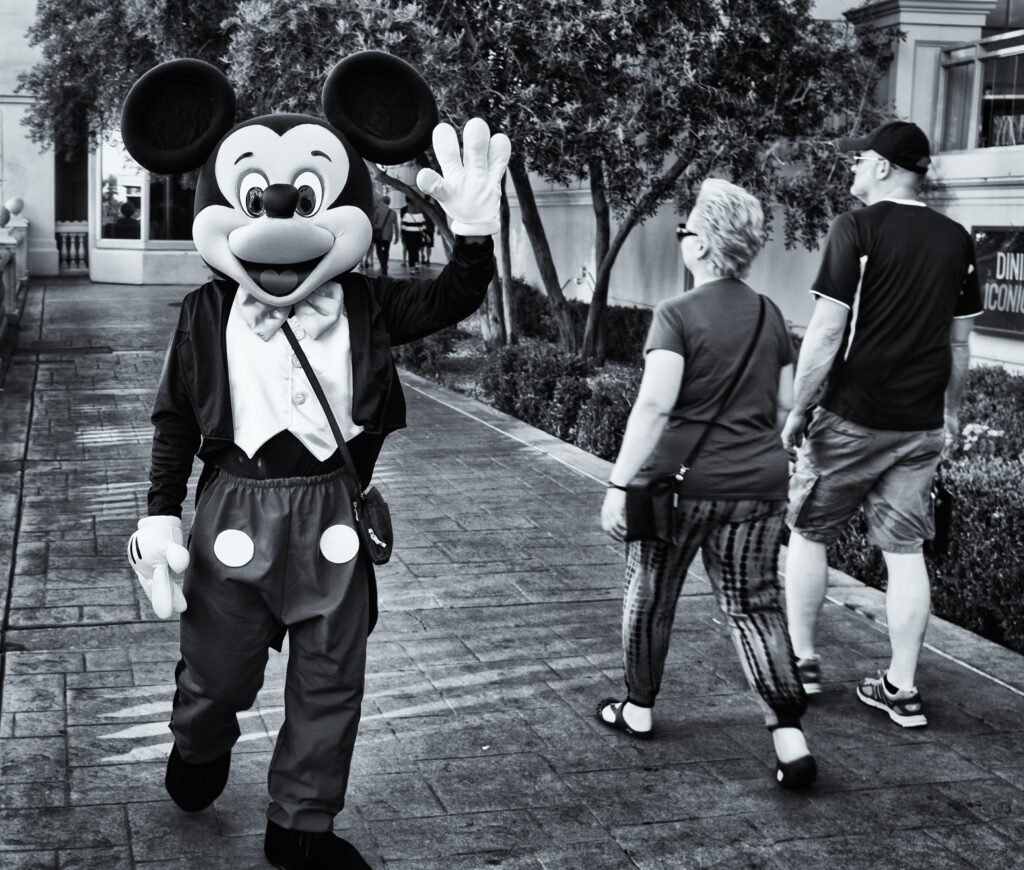
Authors Alliance thanks our research assistant, Derek Chipman, for researching and authoring this blog post.
Copyright and Disney are in the news again with the recently proposed Copyright Clause Restoration Act, legislation which would reduce the length of copyright protection as 2024, when the iconic character Mickey Mouse will enter the public domain, approaches. The bill, proposed by Senator Josh Hawley, would reduce the term of new copyrights to 56 years from its current duration—the life of the work’s author plus an additional 70 years for most works—and would apply this change retroactively to entertainment companies with over $150 billion in market capitalization (currently around 70 companies). Senator Hawley has specifically targeted Disney with his bill as according to his website and statements to the press. This blog post will provide a brief history of Disney’s relation to copyright term extensions and the public domain to contextualize the latest copyright term debate.
The first short cartoon featuring Mickey Mouse, “Steamboat Willie,” was released on November 18, 1928, becoming a hit and launching Walt Disney Studio on its path to becoming an industry juggernaut. While not the first cartoon to use sound, “Steamboat Willie” was exceptionally creative with its music and sound effects, premiering only a year after Al Jolson’s The Jazz Singer. “Steamboat Willie” took three months to complete with an estimated budget of $4,986 and was an immediate hit with audiences following its premiere in New York.
At the time of Mickey’s debut, copyright law protected a work for up to 56 years under the Copyright Act of 1908. Under this law, copyright protection was for an initial term of 28 years, with an option to renew for another 28 years, meaning that the cartoon short would have entered the public domain no later than 1984. However, in 1976, Congress passed a new Copyright Act which extended the term of copyright for a period of 50 years after the death of the author with a maximum of 75 years for pre-existing works, pushing Steamboat Willie’s entry into the public domain until 2003. Then, in 1998, the Sonny Bono Copyright Term Extension Act was passed, extending the copyright term once again and keeping “Steam Boat Willie” from entering the public domain until January 1, 2024, almost 96 years after its debut. Disney lobbied heavily for the 1976 extension and the 1998 extension. In fact, the 1998 extension became derisively known as the “Mickey Mouse Protection Act” due to Disney’s heavy lobbying. With a public more interested in copyright law, it seems unlikely that Disney will successfully push for another extension.
Why did Disney push for these extensions? Copyright allows Disney to control access to these original cartoons and designs. Once it has entered the public domain, “Steam Boat Willie” will be free for the public to use in new works and distribute as they see fit. However, it is important to note that later designs of the characters would still be copyrighted until their terms end. It is also important to note that while the copyright protections for the characters would end, trademark protections on the character still exist (for a rundown on the differences between trademark and copyright, check out 2020 our blog post on the topic).
“Steamboat Willie” entering the public domain will enrich and benefit the public at large as authors and creators create derivative works and new imaginings of the work. Disney itself makes various use of public domain works in some of its most popular films: Frozen and The Little Mermaid are based on Hans Christian Andersen stories from the late 19th century, The Lion King is a reimagining of Shakespeare’s Hamlet, and numerous others are based on folktales and myths. Incredibly, “Steamboat Willie” itself made use of the public domain: one of the film’s songs was set to the tune of “Turkey in the Straw,” which was already in the public domain at the time. Disney’s reliance on the public domain and simultaneous efforts to expand the scope of copyright protection are remarkable, demonstrating how the public domain can be a potent tool for creators while the long scope of copyright protection can be a strong limitation on add-on creation.
While the latest Copyright Extension bill may in reality have more to do with topics outside of copyright, shortening the length of copyright protection could positively impact cultural exchange by allowing culturally iconic and historically important works and characters like Mickey Mouse to enter the public domain sooner than nearly a century after their debut. While the bill is unlikely to pass, having been criticized by some as inaccurate and potentially unconstitutional, its introduction is itself notable, and has the potential to bring attention to the need for carefully considering the limits of copyright protection.
Discover more from Authors Alliance
Subscribe to get the latest posts sent to your email.
